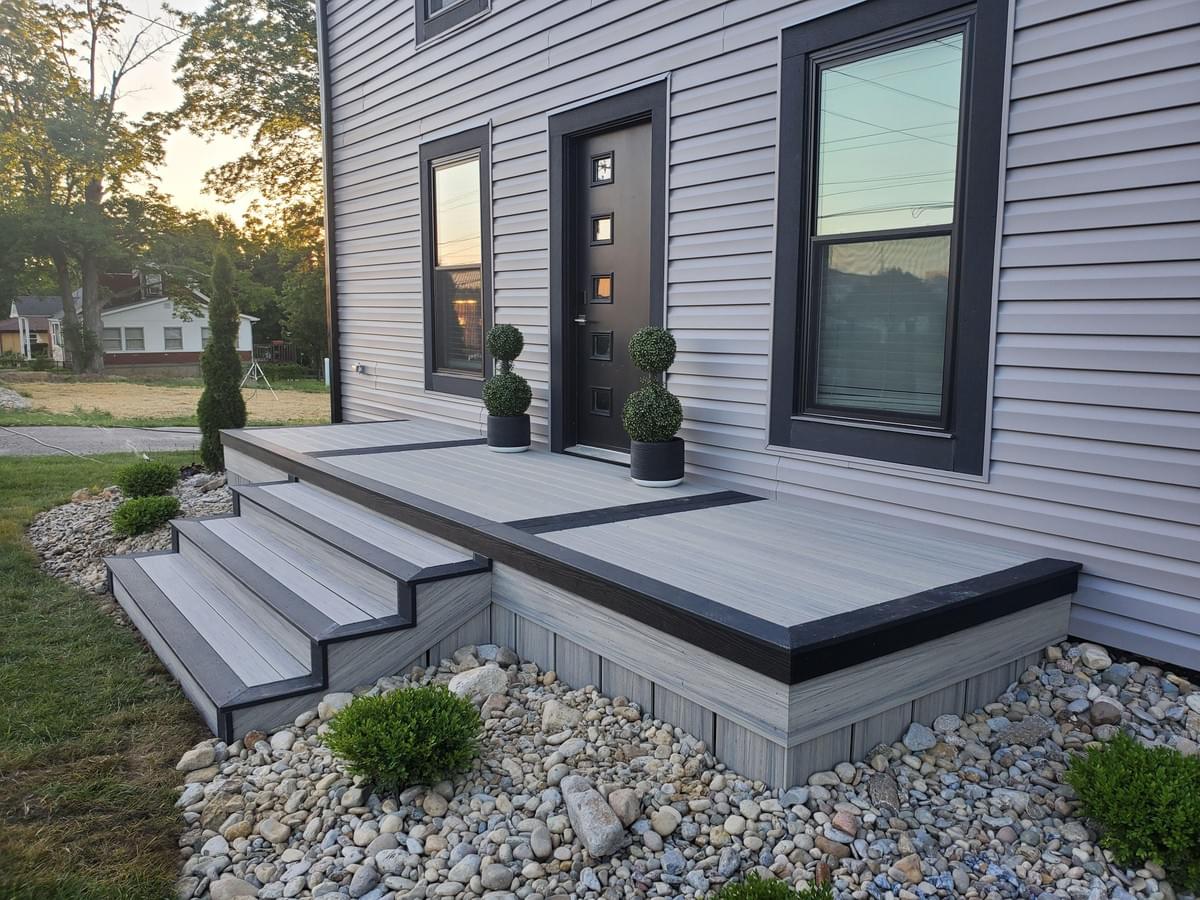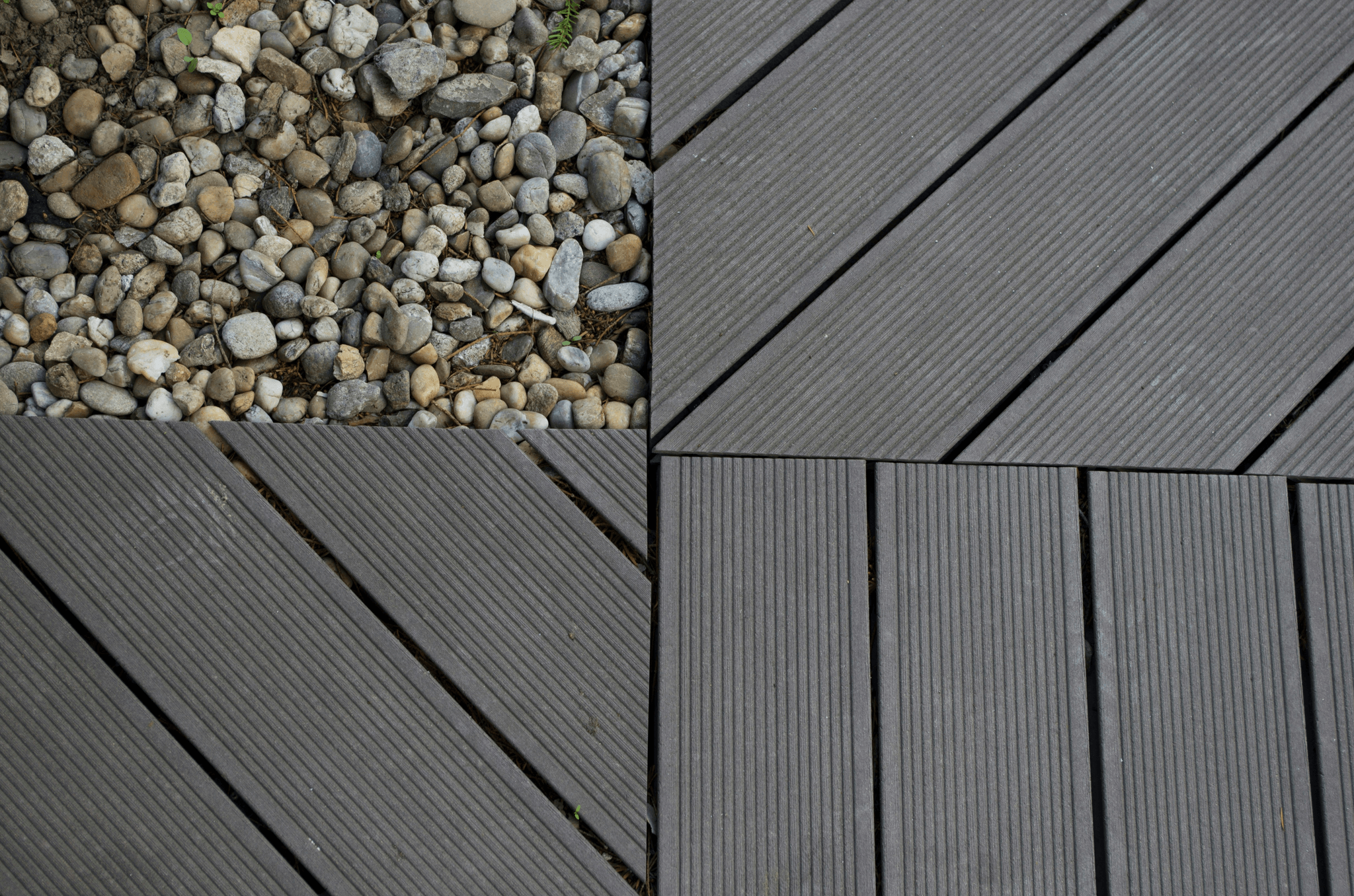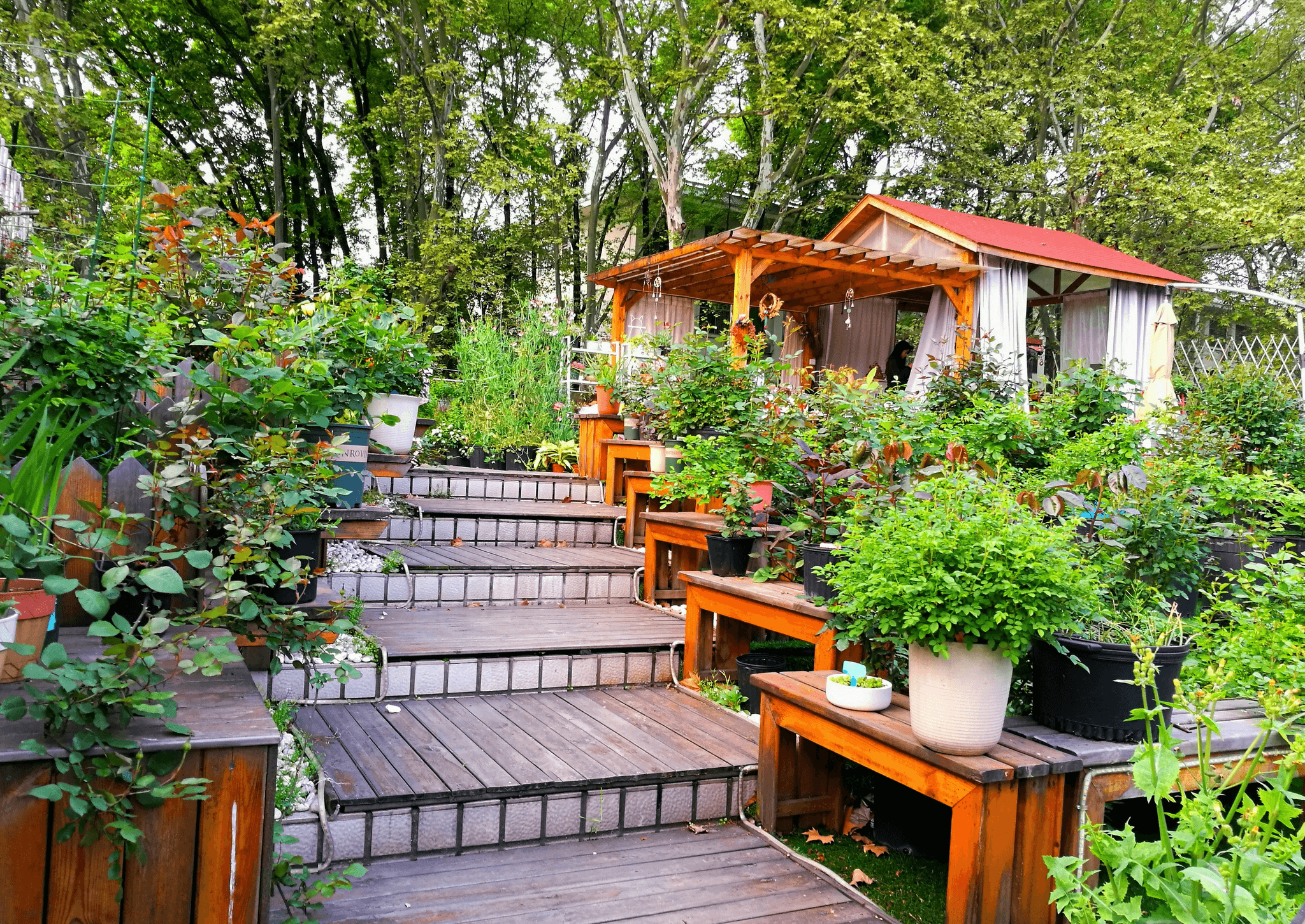Introduction

Decking can be a delightful addition to any garden, offering a perfect spot for relaxation or entertaining guests. However, before you dive headfirst into building that timber decking paradise, you might be wondering: do you need planning permission for decking? The nuances of decking planning permission can be a bit tricky, but understanding them is crucial to avoid potential headaches down the line.
Understanding Decking Planning Permission
Planning permission for decking often depends on various factors, including the height and location of your structure. While many homeowners assume that their garden decking is exempt from regulations, this isn't always the case.
When Ground Decking Requires Approval
Ground decking typically has fewer restrictions than raised structures; however, there are still instances where approval may be necessary. For example, if your ground deck exceeds certain dimensions or affects drainage in your garden, it could trigger the need for planning permission. Keeping in mind that local regulations vary significantly means it's essential to check whether your specific project requires any form of consent.
The Lowdown on Raised Decking Permissions
Generally speaking, if your raised deck reaches a height above 30 cm (approximately one foot), you'll likely need to seek approval from your local authority. Additionally, design considerations such as proximity to boundaries and impact on neighboring properties play a significant role in determining whether consent is required for your decking house project.
Do You Need Planning Permission for Decking?

Common Misconceptions About Decking
One prevalent misconception is that all types of timber decking are automatically permissible without consent. While it’s true that some ground-level garden decking may not require planning permission, raised or larger structures often do. Additionally, many people believe that if their decking covers a small area, they can skip the approval process; however, local regulations can vary significantly and should always be checked.
Another myth is that if you’re replacing existing decking with new timber and decking materials in the same footprint, you won’t need to apply for permission. This isn’t always correct; even minor changes in height or design could trigger the need for consent. It’s essential to debunk these myths early on to avoid costly mistakes later.
Factors Influencing Planning Permission
Several factors influence whether you’ll need planning permission for your decking project. First and foremost is the height of your proposed structure; if your deck exceeds a certain height—typically around 30 centimeters—it may require approval. Additionally, factors such as proximity to property boundaries and whether your home falls within a conservation area can also impact whether you need consent.
The size of your deck plays a significant role as well; larger structures generally attract more scrutiny from local authorities than smaller ones. Moreover, the materials used in construction, such as timber versus composite options or decorative features like railings and lighting, can also affect compliance with local laws regarding garden decking.
The Importance of Local Regulations
Understanding local regulations is crucial when embarking on any decking project—especially when asking yourself: do you need planning permission for decking? Each council has its own set of guidelines that dictate what’s permissible in terms of size, height, and design features. Ignoring these regulations could lead to fines or even orders to dismantle your beloved deck.
Local councils often provide accessible resources online where homeowners can check specific requirements related to timber decking and other outdoor structures. It’s wise to consult these guidelines before beginning any work on your deck; doing so will save time and prevent unexpected costs associated with compliance issues down the line.
In summary, while many homeowners dream about enhancing their outdoor space with stunning garden decks or cozy raised platforms made from quality timber and decking materials, understanding planning permissions is key to making those dreams a reality without hassle.
Ground Decking: What’s the Verdict?

Generally, ground decking is considered a permitted development, meaning you may not need formal approval, but there are exceptions based on size and location. Understanding these nuances can save you from potential headaches down the line.
When to Seek Permission
So, when should you actually seek permission for your garden decking? If your timber decking exceeds certain dimensions—typically over 30 cm in height—or if it alters the existing landscape significantly, it's time to check with your local council. Additionally, if your decking house is located near protected areas or listed buildings, seeking advice is crucial to ensure compliance.
Typical Ground Decking Dimensions
Typical dimensions for ground decking usually hover around 300 mm in height and can extend up to 30 square meters in area without triggering planning permission requirements. However, if you're considering a larger timber and decking project that might infringe on neighboring properties or local aesthetics, you'll want to tread carefully. Remember that local regulations may impose stricter limits depending on where you live.
Navigating the Approval Process
Navigating the approval process for ground decking can feel like a maze at times, but fear not! Start by checking your local council's guidelines online; they often have detailed information about what constitutes acceptable garden decking designs and dimensions. If you do find yourself needing permission for your project or even a simple decking replacement, prepare all necessary documentation—like plans and descriptions of materials—to streamline the process efficiently.
Raised Decking: A Heightened Approach

When it comes to decking, raised structures can add a unique flair to your garden while also increasing functionality. However, the question often arises: do you need planning permission for decking? In many cases, raised decking requires consent due to its height and potential impact on neighboring properties, making it essential to understand the regulations before embarking on your timber decking project.
Why Raised Decking Might Need Consent
Raised decking poses specific challenges that might necessitate planning permission. For instance, if your garden decking exceeds a certain height—typically around 30 centimeters—it can obstruct views or create privacy concerns for neighbors, prompting local councils to require approval. Additionally, if the raised structure is built close to property boundaries or in a conservation area, you may find that local regulations are stricter regarding timber and decking installations.
Design Considerations for Raised Decking
Designing raised decking involves more than just aesthetics; it's about ensuring compliance with local guidelines as well. When crafting your design, consider factors such as height restrictions and materials used; opting for timber can blend seamlessly with natural surroundings while still adhering to regulations. Furthermore, think about how the layout will affect drainage and access; proper planning not only enhances visual appeal but also ensures safety and longevity of your garden decking.
Examples of Raised Decking Requirements
Understanding examples of raised decking requirements can help demystify the process of seeking approval. For instance, some areas may require you to submit detailed plans showcasing dimensions and materials used in construction—this is where knowing your expected costs for planning applications becomes crucial. Moreover, local councils often provide guidelines on acceptable heights and proximity to boundaries; adhering closely to these examples will help streamline the approval process and avoid unexpected setbacks during your decking replacement journey.
Understanding Decking Cover Regulations

Decking cover regulations can be a bit of a minefield, but understanding them is crucial for any homeowner considering garden decking. Essentially, decking cover refers to the total area your decking occupies in relation to your garden space. It's important to grasp how these regulations impact your project, especially when determining if you need planning permission for decking.
What is Decking Cover?
Decking cover encompasses the amount of ground area that your timber decking takes up in your outdoor space. Local councils often have specific guidelines regarding how much of your garden can be covered by structures like decking, which can affect both aesthetics and functionality. If you're planning on installing new timber and decking, knowing the limits of decking cover will help ensure compliance with local regulations.
Local Council Guidelines on Decking Cover
Local council guidelines on decking cover vary significantly across regions, so it’s essential to check with your local authority before diving into any project. Many councils have restrictions on the percentage of land that can be covered by hard surfaces, which includes timber decking and other materials. These rules are designed to maintain green spaces and manage water drainage effectively; thus, understanding these guidelines can save you from costly mistakes down the line.
How to Stay Compliant
Staying compliant with decking cover regulations requires a bit of homework but is ultimately worth it for peace of mind during your project. Begin by consulting local council websites or contacting their offices directly to gather information about specific requirements in your area regarding garden decking. Additionally, consider keeping detailed records and plans for any future timber and decking projects; this proactive approach will help you navigate through potential issues related to planning permissions or deck replacement costs more smoothly.
Costs Involved in Decking Permissions

When embarking on your decking journey, understanding the costs associated with planning permissions is crucial. Whether you’re considering timber decking for a cozy garden nook or a raised decking house to elevate your outdoor entertaining, knowing the financial landscape can help you avoid nasty surprises. Let’s dive into what you can expect in terms of costs and budgeting.
Expected Costs for Planning Applications
The costs of planning applications for decking can vary widely depending on your local council's regulations and the specifics of your project. Typically, you might find yourself shelling out anywhere from £200 to £500 just to submit an application; however, this figure can be higher if your decking cover exceeds certain dimensions or if additional assessments are needed. Remember that these fees are just one piece of the puzzle when asking yourself, do you need planning permission for decking?
Budgeting for Decking Replacement
When it comes to budgeting for timber and decking replacement, it's essential to account not only for materials but also potential planning fees and installation costs. Depending on the quality of timber decking you choose—whether hardwood or softwood—the cost can range significantly; expect anywhere from £20 to £100 per square meter! Additionally, don’t forget to factor in labor costs if you're hiring professionals; they can add another layer of expense that may catch you off guard.
Factors Impacting Decking Cost
Several factors influence overall decking cost beyond just materials and labor; these include size, design complexity, and local regulations regarding deck height or coverage area. If you're building a large raised deck with intricate designs or features like railings and steps, your expenses will naturally increase compared to a simple garden decking layout. Moreover, understanding local guidelines on what constitutes acceptable decking cover helps ensure that your project remains compliant while keeping unexpected costs at bay.
Conclusion

In wrapping up our exploration of decking permissions, it's clear that understanding the ins and outs of planning regulations is crucial for any decking project. Whether you're contemplating ground decking or raised options, knowing if you need planning permission for decking can save you time, money, and potential headaches down the line. Remember, local regulations vary greatly, so always check your council's guidelines to avoid surprises.
Essential Takeaways on Decking Permissions
First and foremost, do you need planning permission for decking? The answer often hinges on specific factors such as height and location. Ground decking typically requires less scrutiny than raised structures; however, it’s essential to consider how decking cover may affect your property’s overall aesthetics and compliance with local laws.
Additionally, timber decking offers a classic look but may come with its own set of regulations depending on your area. Always be mindful of dimensions—knowing the typical ground decking sizes can help you determine whether you'll need to seek approval or not. Lastly, keep in mind that navigating the approval process might seem daunting at first but can lead to a smoother construction experience.
The Role of Composite Decking Inc
Composite Decking Inc plays a pivotal role in providing solutions that blend aesthetics with compliance needs in the world of timber and decking options. Their products not only enhance garden spaces but also often meet various local guidelines without compromising style or functionality. When considering a deck replacement or new installation, partnering with experts like Composite Decking Inc ensures that your project aligns with both your vision and necessary regulations.
Furthermore, they offer valuable insights into costs associated with planning applications and materials needed for quality installations—essential information when budgeting for your dream deck! By choosing composite materials over traditional timber decking options, homeowners can enjoy durability while potentially circumventing some regulatory hurdles related to maintenance requirements.
Final Thoughts on Your Decking Journey
As you embark on your decking journey—whether it’s installing new garden decking or replacing an old structure—remember that knowledge is power when it comes to permissions and costs involved in the process. Understanding what constitutes appropriate decking cover will help ensure compliance while maximizing enjoyment from your outdoor space. So before breaking out those tools or calling contractors, take a moment to ask yourself: do you need planning permission for decking?
Ultimately, creating an inviting outdoor area should be both fun and fulfilling; just make sure you're equipped with all the right information to avoid any unnecessary bumps along the way! With thoughtful planning and adherence to local regulations regarding timber and decking projects, you'll be well on your way toward enjoying a beautiful deck tailored perfectly for relaxation or entertaining guests.
